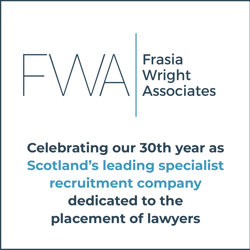Know it, see it, avoid it
The latest article from Lockton covers the important topic of spotting conflicts of interest and a reminder that ‘if it feels wrong, it probably is’.
It is best to start with the basics when considering the issue of conflicts of interest. A conflict can be difficult to define: ‘you know it when you see it’ is a good foundation on which to build. Unfortunately, as the Law Society of Scotland (LSS) has pointed out in its guidance, some solicitors only ‘see it’ long after the damage has been done. Remember, if it feels wrong, it probably is.
Importantly, whether a conflict of interest exists is an ongoing issue that requires constant vigilance and assessment.
Know it: identifying conflicts of interest
The starting point when considering conflicts of interest in general is Rule B1:7 of the LSS Practice Rules 2011, which prohibits a solicitor from acting for two or more clients in matters where there is a conflict of interest between the clients, or for any client where there is a conflict between the interest of the client and your interest or that of your practice unit. Crucially, it does not qualify the general rule by saying ‘unless the parties consent’.
Rule B2.1 then provides that you shall not act for two or more parties whose interests conflict, but goes on to set out some specific examples of when a solicitor may act for more than one party in certain transactions. These only apply when there is no existing conflict of interest and one is unlikely to arise.
Although ‘conflict of interest’ is not defined, three core considerations are:
- Would the ordinary solicitor acting with ordinary care give different advice to different parties about the same matter?
- Would the work for one client have an adverse impact on a matter you are dealing with for another client?
- Are you unable to disclose relevant information to a client because of a duty of confidentiality to another?
If the answer to any of these is ‘yes’, then the LSS considers that there is a conflict of interest.
Identifying conflicts of interest is an ongoing obligation for solicitors as a conflict is not always apparent from the outset. For example, in litigation, a firm can (and often does) act for multiple defenders where their position is aligned (for instance, a director of a company and the company itself). However, their interests may begin to diverge; for example, it may become apparent that the director did not comply with their duties to the potential detriment of the company. Here, a solicitor is in a conflict situation and all three of the considerations listed above would probably apply.
See it: conflicts of interest in practice
In its annual reports, the Scottish Solicitors’ Discipline Tribunal has expressed concern about continuing failure to recognise conflicts of interest and the importance of identifying them has also been recognised by the courts. In Liquidation of Quantum Distribution (UK) Ltd [2012] CSOH 191, Lord Hodge underlined that solicitors must be “sedulous in guarding against conflicts of interest”.
In another example, a solicitor had acted for A and their former cohabitee B in the sale of their property but also for B in an interdict against A. The Inner House highlighted that the failure to inform the clients of their acting for both parties was difficult to reconcile with the level of trust and confidence required in the solicitor–client relationship. Although there was no ulterior motive, there was a clear conflict of interest.
It is important to bear in mind that conflicts can exist more widely within a firm. This is of particular relevance to solicitors practising in a large firm with multiple departments. One party may instruct steps to be taken against a party that another department has acted for. The LSS Rules at B2.1 provide an illustration of a firm of solicitors acting in conflict where its litigation department lodged an inhibition against a client of the firm’s conveyancing department.
The duty of confidentiality presents a particular issue as it opens the door to the possibility of a conflict between a former and current client. This can present an issue when a solicitor is in possession of confidential information from a previous client that would be of benefit to another.
Avoid it: safeguarding against conflicts of interest
Avoiding conflicts is not always straightforward. It is a continuing task and issues can arise when least expected. However, you can mitigate against the risk through:
- Education and knowledge – Individual solicitors are under a duty to act in the best interest of their clients and comply with the rules of professional practice. Therefore, we all have to understand our duties and responsibilities clearly and keep up with training and publications on the subject.
- Internal processes – Make sure there is an effective conflict check system in place. Any database should be firm-wide, easily cross-searchable and up to date, and individuals should be trained on how to use it most effectively. Searches must be carried out on all elements, including (but not limited to):
- all relevant individuals (including directors and persons with significant control of any related companies);
- all corporate entities (bearing in mind previous company names, trading/alternative names and parent companies); and
- all relevant properties/other subject matter involved
- Vigilance – Do not become complacent about your duties. Conflict checks should be carried out at the beginning of a matter and when any new party comes into the picture (for instance, a new joint purchaser of a property or defender in a court action). Suggested good practice would be to renew conflict checks in any event six months from the initial conflict check and annually thereafter for continuing clients.
A solicitor should decline to act if a conflict is apparent at the outset. However, if a conflict becomes apparent in an ongoing matter, then a solicitor can contact the Professional Practice team at LSS for guidance:
0131 226 8896 or profprac@lawscot.org.uk
Written by Stephanie Barratt and Alisdair Matheson, Brodies LLP






